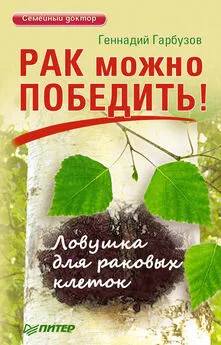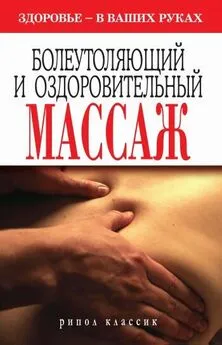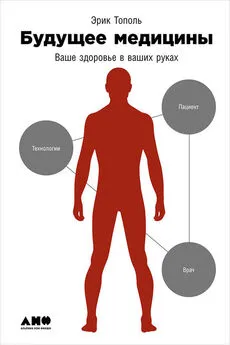Джейн Плант - Ваша жизнь в ваших руках. Как понять, победить и предотвратить рак груди и яичников
- Название:Ваша жизнь в ваших руках. Как понять, победить и предотвратить рак груди и яичников
- Автор:
- Жанр:
- Издательство:Литагент «РИПОЛ»15e304c3-8310-102d-9ab1-2309c0a91052
- Год:2012
- Город:Москва
- ISBN:978-5-386-05255-3
- Рейтинг:
- Избранное:Добавить в избранное
-
Отзывы:
-
Ваша оценка:
Джейн Плант - Ваша жизнь в ваших руках. Как понять, победить и предотвратить рак груди и яичников краткое содержание
Рак груди – непонятная и пугающая тема. Суровые факты шокируют: основная причина смерти женщин от 25 до 75 лет – различные формы рака, и рак молочной железы – один из самых смертоносных. Это современное бедствие уже приобрело характер эпидемии. Но книга «Ваша жизнь в ваших руках» написана не для того, чтобы вы боялись. Напротив, это история о надежде.
Пройдя путь от постановки страшного диагноза к полному выздоровлению, профессор Плант на собственном опыте познала все этапы онкологического лечения, изучила глубинные причины возникновения рака груди и составила программу преодоления и профилактики этого страшного заболевания. Благодаря десяти факторам питания и десяти факторам образа жизни от Джейн Плант ваша жизнь действительно будет в ваших руках.
Ваша жизнь в ваших руках. Как понять, победить и предотвратить рак груди и яичников - читать онлайн бесплатно ознакомительный отрывок
Интервал:
Закладка:
23. Campbell. T. Colin, Campbell, Thomas М. II, Robbins, John and Lyman Howard, 2006. The China Study: The Most Comprehensive Study of Nutrition Ever Conducted and the Startling Implications for Diet, Weight Loss and Long-term Health , Ben-bella Books.
24. Barretto, A.M., Schwartz, G.G., Woofruff, R. and Cramer, S.C., 2000. 5-hydroxyvitamin D-3, the prohormone of 1,25-dihydroxyvitamin D-3, inhibits the proliferation of primary prostatic epithelial cells. Cancer Epidemiology Biomarkers ^Prevention , 9, 3, 265–270.
25. http://www.rense.com/gencral/dair.htm
26. Spallholz, J.E., Stewart, J.R., 1989. Advances in the role of minerals in immunobiology. Center for Food and Nutrition, Texas Tech University, Lubbock 79409. Biol Trace Elem Res Mar , 19 (3) 129–151.
27. Gynecologic , 2004, 93, 320–327.
28. Redbook, April, 1989, vl72, n6, p. 96 (5).
29. Niki, E., Noguchi, N, Tsuchihashi, H. and others, 1995. Interaction among vitamin C, vitamin E and beta-carotene. Am J Clin Nutr, 62 (Suppl), 1322S-1326S.
30. Craig, Winston J., 2002. Phyiochemicals: Guardians of Our Health,
http://www.andrews.edu/NUFS/phyto.html, 03/12/02.
31. New Scientist , August 2006.
32. Anon. 2003. Growing problems: Endocrine disruptors under the spotlight. ENDS Report , 336, 20–23.
33. Vikse, R. and others, 1999. Heterocyclic amines in cooked meat. Tidsskr Nor Laegeforen, 119 (1), 45–49.
34. Skog, K. and others, 1997. Polar and non-polar heterocyclic amines in cooked fish and meat products and their corresponding pan residues. Food Chemical Toxicology , 35 (6), 555–565.
35. BMJ , 325, 1250.
36. JAMA, 1985, 254 (3), 356–357.
37. ЛFSTAN/NCFST Acrylamide in Food Workshop, 1989. White paper for Working Group 5: Risk Communication. National Research Council, National Academy of Sciences (NRC-NAS). Improving Risk Communication . National Academy Press. Washington DC.
38. Fleck, Fiona, 2002. Experts launch action on staple foods. BMJ , 325, 120; Anon. 2002. Acrylamide dues found in Asparagine. ICON , 1 (6), 24.
39. US Environmental Protection Agency, http://www.epa.gov/ ttn/atw/hlthef/acrylami.html
40. http://ntp-server.niehs.nih.gov/htdocs/Chem_H6cS/NTP_ Chem7/Radian79-06-l.html
41. http://www.nsc.org/library/chemical/Acrylami.htm
42. Anon. 1997. Acrylamide. Toxic Air Contaminant Identification. List Summaries – ARB/SSD/SES. September 1997.
43. Advisory Committee on Hazardous Substances. Sixth Annual Report (2001–2002). Department for Environment, Food and Rural Affairs; The Royal Commission on Environmental Pollution, 2003. Chemicals in products: safeguarding the environment and human health. Report 24.
44. US Environmental Protection Agency, http://www.epa.gov/ ttn/atw/hlthef/acrylami.html
45. http://ntp-server.niehs.nih.gov/htdocs/Chem_H6cS/NTP_ Chemy/Radian79-06-l.html
46. http://www.foodstandards.gov.uk/mi3ltimedia/webpage/ acrylamide_study_faq
47. www.cancerresearchuk.org
48. White, Craig A. and Macleod, Una, 2002. ABC of psychological medicine: Cancer. BMJ , 325, 377–380.
49. Walsh, Kiri, King, Michael, Jones, Louise, Tookman, Adrian and Blizzard, Robert, 2002. Spiritual beliefs may affect outcome of bereavement: prospective study. BMJ , 324, 1551–1554.
50. White, Craig A. and Macleod, Una, 2002. ABC of psychological medicine: Cancer. BMJ , 325, 377–380.
51. White, Craig A. and Macleod, Una, 2002. ABC of psychological medicine: Cancer. BMJ , 325, 377–380.
52. White, Craig A. and Macleod, Una, 2002. ABC of psychological medicine: Cancer. BMJ , 325, 377–380.
53. Petticrew, Mark, Bell, Ruth and Hunter, Duncan, 2002. Influence of psychological coping on survival and recurrence in people with cancer: systematic review. BMJ , 325, 1066–1069.
54. Graham, J, Ramirez, A, Love, S, Richards, M and Burgess, C.
2002. Stressful life experiences and risk of relapse of breast cancer: observational cohort study. BMJ , 324, 1420–1422.
55. Beales, D., 2004. Beyond mind-body dualism: implications for patient car t. Journal of Holistic Healthcare, 1 (3).
56. Ernst, Edzard (ed.), 2001. The desktop guide to complementary and alternative medicine . Mosby.
57. King, Michael and five others, 2002. Effectiveness of teaching general practitioners skills in brief cognitive behaviour therapy to treat patients with depression: randomised controlled trial. BMJ , 324, 947.
58. http://www.nccn.org/patient_gls/_english/_prostate/
59. European Journal of Cancer , 2003, 39, 1562–1567; quoted in BMJ , 327, 402.
60. Plant, Jane and Stephenson, Janet, in preparation. Breakthrough Anxiety and Depression.
61. Bartram, Thomas, 1998. Bartram’s Encyclopedia of Herbal Medicine. London: Robinson.
62. Miller, G H, 1996. Can Active or Passive Smoking Increase Breast Cancer Mortality? Cancer Detect Prevent 20 (5).
63. Mayor, Susan. 2002. Pregnancy and early smoking increases breast cancer risk. BMJ , 325, 12 October 2002, 793.
64. Cancer Epidemiology, Biomarkers and Prevention , July 2003; http://www.nlm.nih.gov/medlineplus/news/fullstory_13352. html
65. Plant, Jane and Tidey, Gill, 2003. Understanding, preventing and overcoming osteoporosis. Virgin Books.
66. Goodman-Gruen, D. and Barrett-Connor, E., 1997. Epidemiology of insulin-like growth factor-I in elderly men and women. The Rancho Bernardo Study. American Journal of Epidemiology , 145, 970–976; Kaklamani, VG., Linos, A., Kaklamani E., Markaki, I. and Mantzoros, C., 1999. Age, sex, and smoking are predictors of circulating insulin-like growth factor 1 and insulin-like growth factor-binding protein 3. Journal of Clinical Oncology , 17. 813–817.
67. Colborn, Т., Dumanoski, D. and Myers, J.P., 1996. Our Stolen Futures , Dutton, Penguin Books, USA.
68. The Environment Agency, March 2000. Endocrine-disrupting substances in the environment: The Environment Agency's Strategy , The Environment Agency, Bristol, UK.
69. Miller, WR. and Sharpe, R.M., 1998. Environmental oestro-gens and human reproductive cancers. Endocrine-Related Cancer , S, 69–96; Plant, J.A. and Davis, D.L., 2003. Breast and prostate cancer: sources and pathways of endocrine-disrupting chemicals (EDCs). In Geology and Health. Skinner, H.C.W and Berger, A.R. (editors). OUP. 95–99.
70. McKinlay, R. and others, in press. Endocrine disrupting pesticides: implications for risk assessment.
71. Toppari, J., Larsen, J.C., Christiansen, P., Giwercman, A., Grandjean, P., Guillette, L-J., Jr, Jegou, B., Jensen, Т.К., Jouan-net, P., Keiding, N., Leffers, H., McLachlan, J.A., Meyer, O., Muller, J., Rajpert-De Meyts, E., Scheike, Т., Sharpe, R.M., Sumpter, J.S., and Skakkebaek, N.E., 1996. Male reproductive health and environmental xenoestrogens. Environmental Health Perspectives , 104, 741–803.
72. www.cancersupportinternational.com
73. The Royal Commission on Environmental Pollution, 2003. Chemicals in products: safeguarding the environment and human health. Report 24; Annual Reports of the (UK) Chemical Stakeholders Forum, 2002, and The Advisory Committee on Hazardous Substances, 2002; Miller, WR. And Sharpe, P.M., 1998. Environmental oestrogens and human reproductive cancers. Endocrine-Related Cancer , 5, 69–96.
74. Charlier, C.C.J., 2002. Determination of organochlorine pesticide residues in the blood of healthy individuals. Clinical Chemistry and Laboratory Medicine , 44, 361–364; WWF, 2003. UK national biomonitoring survey. WWF.
75. MDuffie, H.H., 2005. Host factors and genetic susceptibility: a paradigm of the conundrum of pesticide exposure and cancer associations. Reviews on Environmental Health. 20 (2), 77-101.
76. Mathur, V, 2002. Breast cancer incidence and exposure to pesticides among women originating from Jaipur. Environment International , 28 (5), 331–336; Starek, A., 2003. Estrogen and organochlorine xenoestrogens and breast cancer risk. International Journal of Occupational Medicine and Environmental Health. 16 (2), 113–124.
77. Frigo, D.E., 2004. Mechanism of AP-1-mediated gene expression by select organochlorines through the p38 МАРК pathway. Carcinogenesis , 25 (Feb), 249–261; Lewis, J.S. and others, 2005. Differential effects of 16-hydroxyestrone and 2-meth-oxyestradiol on cyclin D1 involving the transcription factor ATF-2 in MCF-7 breast cancer cells. Journal of Molecular Endocrinology , 34, 91-105; Tessier, D.D., 2001. Increased ErbB-2 tyrosine kinase activity, МАРК phosporylation, and cell proliferation in the prostate cancer cell line LNCaP following treatment by select pesticides. Toxicological Sciences. 60 (1), 38–43.
78. Swan S.H. and others, 2005. Decrease in anogenital distance among male infants with prenatal phthalate exposure. Environmental Health Perspectives, 113, (8).
79. Kawauchi, H., 2002. Identification of growth hormone in the sea lamprey, an extant representative of a group of the most ancient vertebrates. Endocrinology , 143 (12), 4916–4921; Park, J.I., 2005. Conservation of the heterodimeric glycoprotein hormone subunit family proteins and the LGR signalling system from nematodes to humans. Endocrine Journal , 26 (3), 267–276.
80. Environmental Endocrine Disruptors: A Handbook of Property Data , John Wiley and Sons.
81. Edwards, T.T., 2006. Reproductive dysgenesis in wildlife: a comparative view. International Journal of Andrology, 29 (1), 109–121; Guillette, L.L., 1999. Plasma steroid concentrations and male phallus size in juvenile alligators from seven Florida lakes. General and Comparative Endocrinology , 116(3), 356–372.
82. Colborn, Т., Dumanoski, D. and Myers, J.P., 1996. Our Stolen Futures , Dutton, Penguin Books, USA.
83. Webb, S.F., 2000. Risk assessment approaches for Pharmaceuticals. In: International Seminar: Pharmaceuticals in the Environment, Technological Institute, Section on Environmental Technology, Brussels, 2000.
84. Kolpin, D.A., Furlong, E.T., Meyer, M.T., Thurman, E.M., Zaugg, S.D., Barber, L.B. and Buxton, H.T.; 2002. Pharmaceuticals, Hormones, and Other Organic Wastewater Contaminants in US Streams, 1999–2000: A National Reconnaissance. Environmental Science & Technology , 36, 1202–1211.
85. McQuillan, D., Mullany, J., Parker, J., Mills, D., Sherrell, K. and Chapman, Т.Н., 2000. Drug Residues in Ambient Water: Initial Surveillance in New Mexico, USA. December 2000 Progress Report, http://www.nmenv.state.nm.us/gwb/drugs. html; Morelli, J., 2000. Are Our Medicines Tainting the Environment?
http://webmd.lycos.com/content/article/25/1728_58159?
86. McQuillan, D., Mullany, J., Parker, J., Mills, D., Sherrell, K. and Chapman, Т.Н., 2000. Drug Residues in Ambient Water: Initial Surveillance in New Mexico, USA. December 2000 Progress Report, http://www.nmenv.state.nm.us/gwb/drugs. html
87. The Royal Commission on Environmental Pollution, 2003. Chemicals in products: safeguarding the environment and human health. Report 24.
88. Hamburger Umwelt Institute, 1997. Poor Design Practices – gaseous emissions form complex products.
89. Brown, S.K. and Cheng, M., 2000. Volatile Organic Compounds (VOCs) in New Car Interiors. Presented at the 35th International Clean Air & Environment Conference Sydney, 26–30 November 2000.
Читать дальшеИнтервал:
Закладка:










